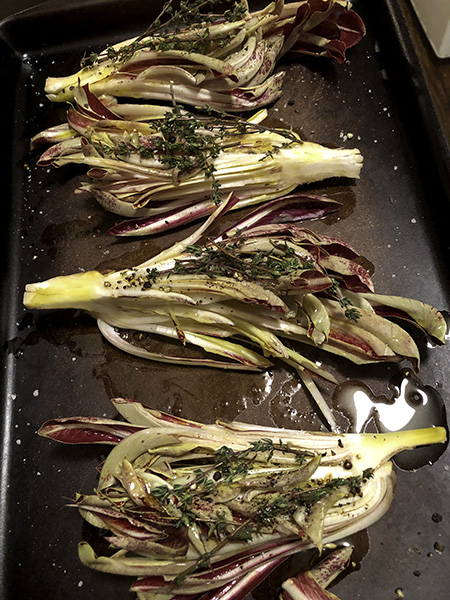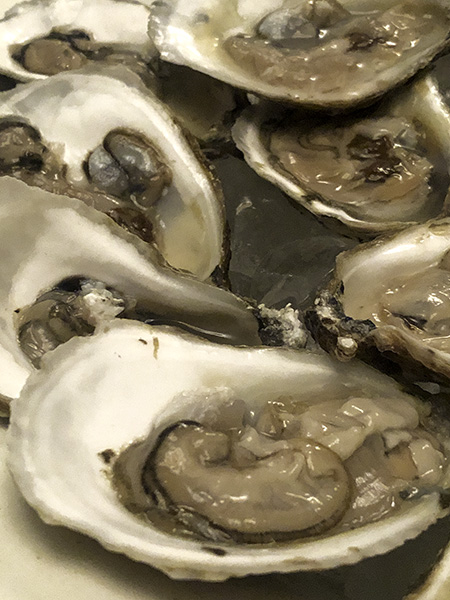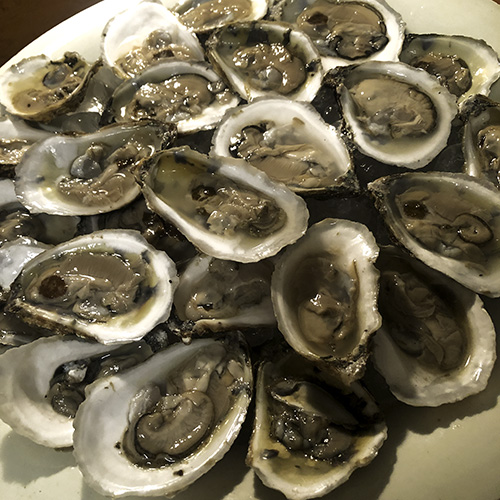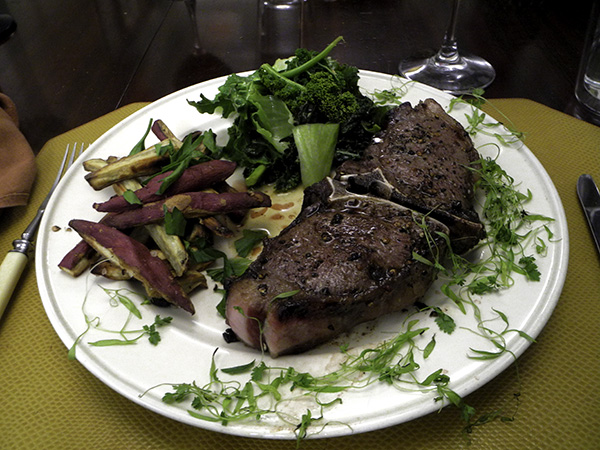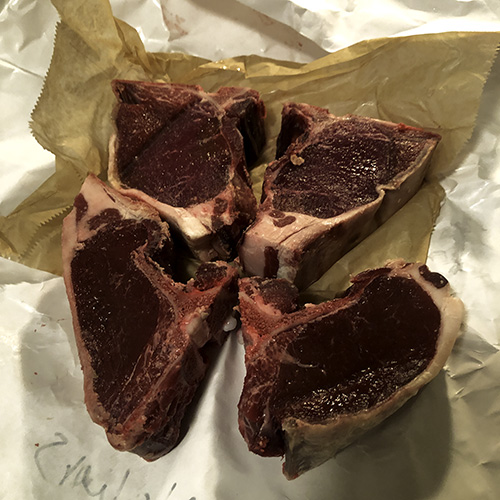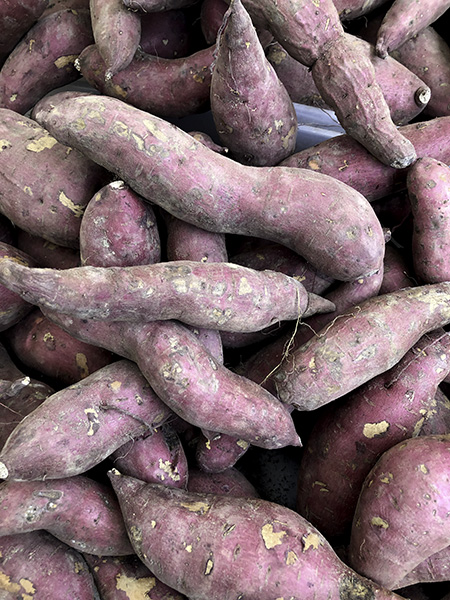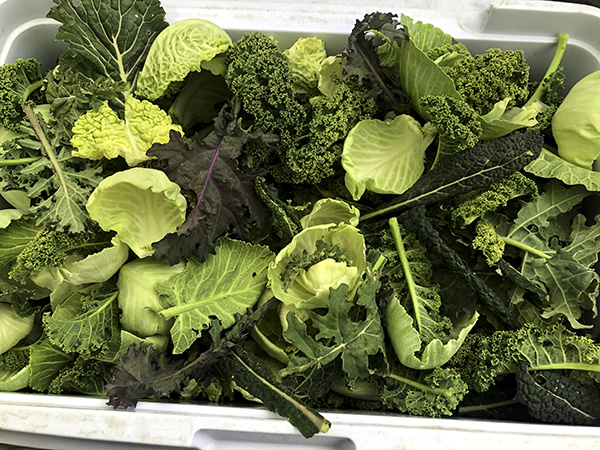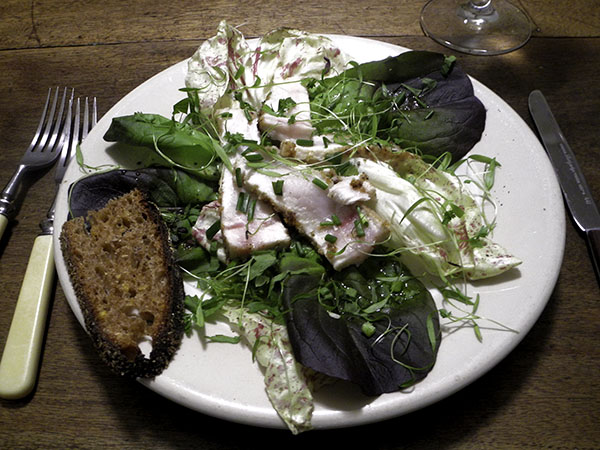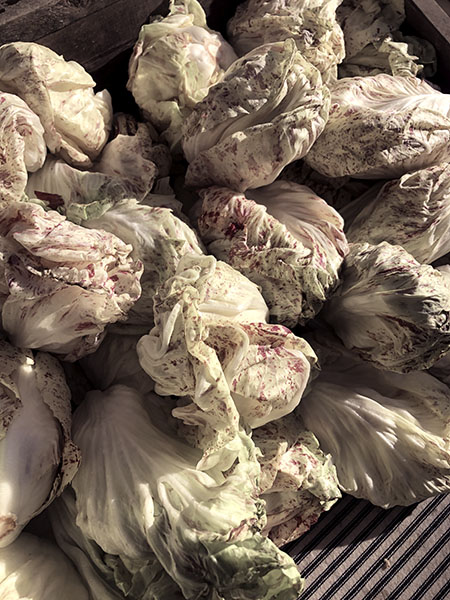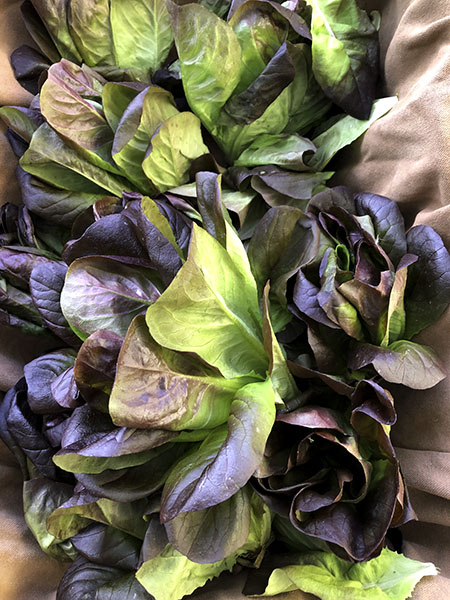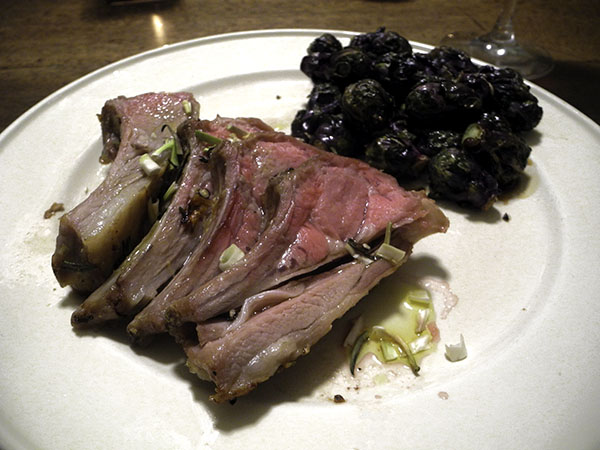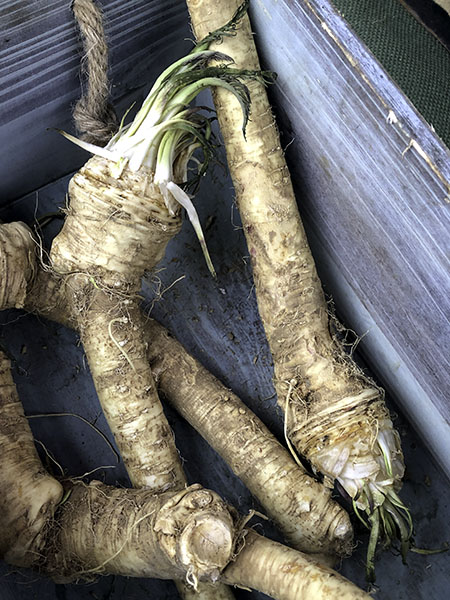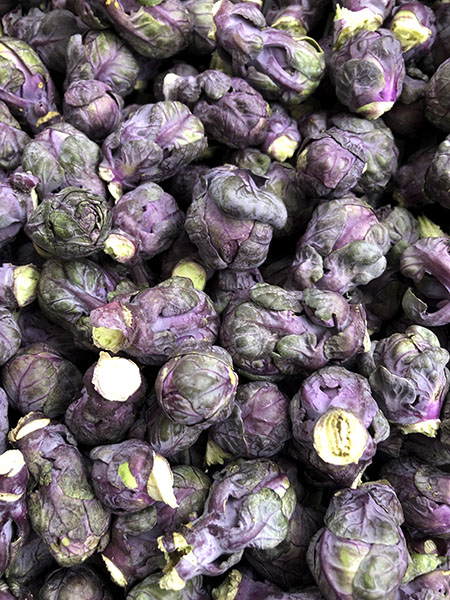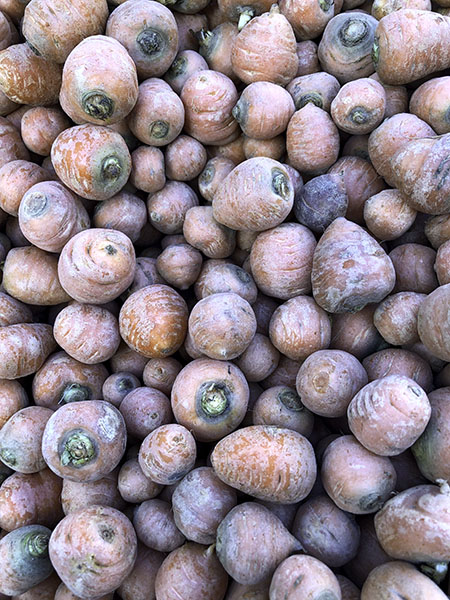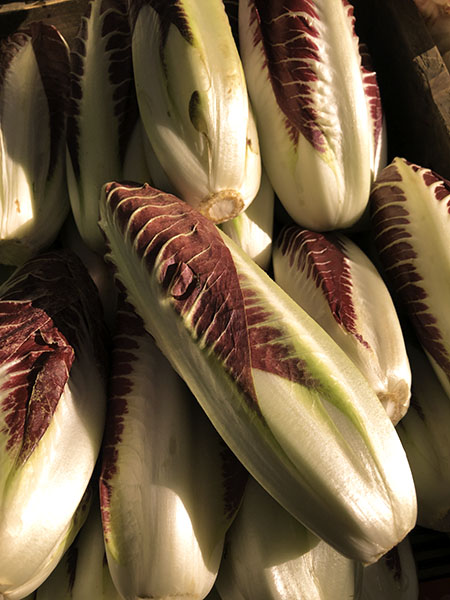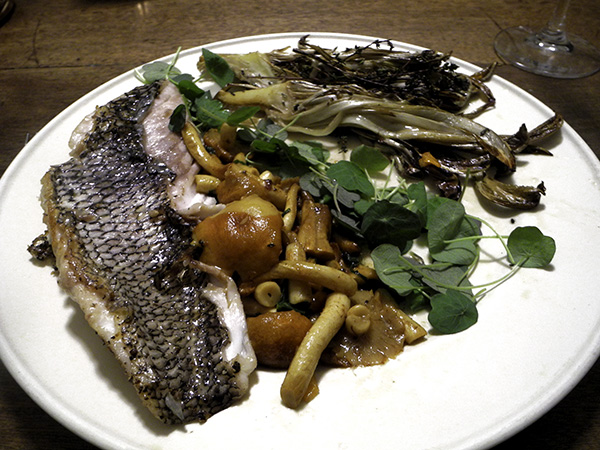
The 4 or 5 rows of colors and textures look great here, but I decided to also include a low angle detail image.
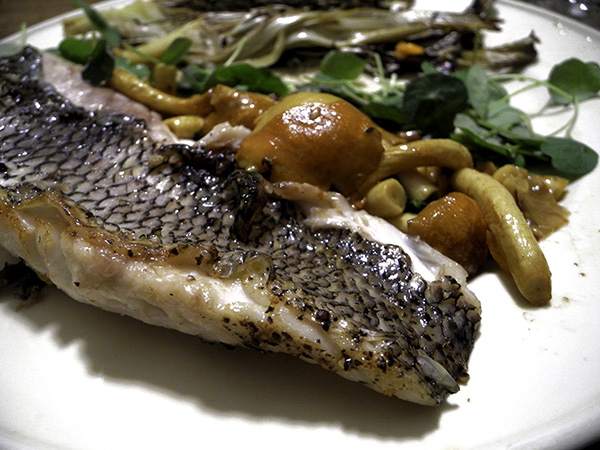
Even under ordinary circumstances it’s difficult to resist the aesthetic and taste appeal of sea bass fillets, but when they’re on sale, as they were on Wednesday, it’s virtually impossible.
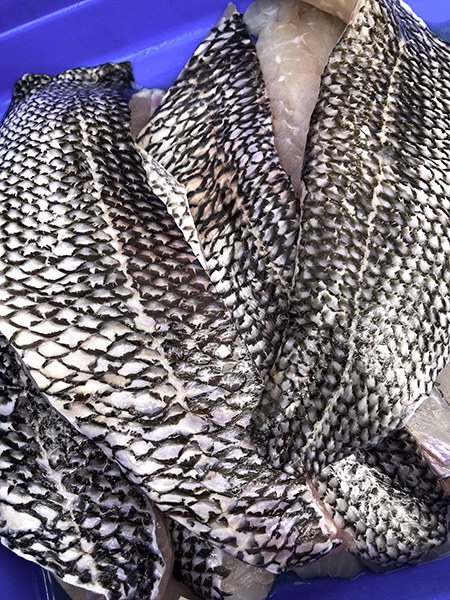
This is also a very easy fish to cook. In this case it was merely seasoned with salt and pepper and briefly sautéed in a combination of butter and oil. The mushrooms that accompanied it were prepared after the fish had been cooked, although using the same pan, with the juices that remained.
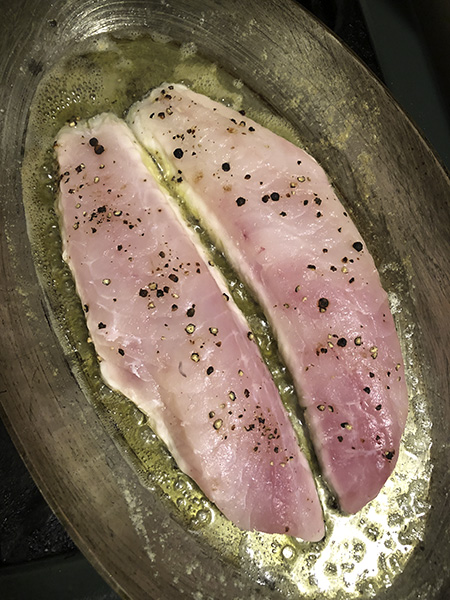
- two 8-ounce Black Sea Bass fillets from American Seafood Company, washed, dried, seasoned on both sides with sea salt and freshly ground black pepper, sautéed for 2 to 3 minutes over a fairly brisk flame with butter and a little olive oil inside a large, vintage thick-copper oval long-handled pan, skin side down, then turned over and the other side cooked for about the same length of time, removed when done and arranged on 2 warm plates (I had them inside the oven, set to its lowest temperature, but if left outside an oven they should at least be covered a little to retain their warmth),
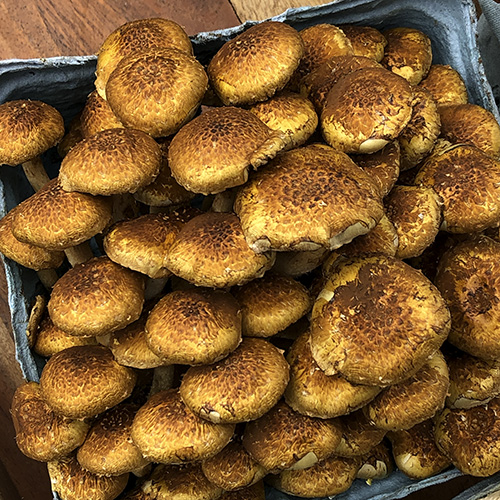
then, with 2 tablespoons of butter added to the pan, 5 ounces of beautiful chestnut mushrooms from Gail’s Farm stall in the Union Square Greenmarket, cut up, mostly into 2, maybe 3 pieces each, sautéed, stirring, until lightly cooked, seasoned with sea salt, freshly-ground black pepper, and a pinch of a hickory smoked Jamaican Scotch bonnet pepper from Eckerton Hill Farm and my last fresh habanada pepper of the season, chopped, from Alewife Farm), a couple tablespoons of chopped parsley from Phillips Farms, and a tablespoon and a half of the juice of an organic California Whole Foods Market lemon, the mushrooms stirred some more, everything in the pan then spooned onto the plates to the side of the fish (the skin of the bass is too beautiful to cover up)
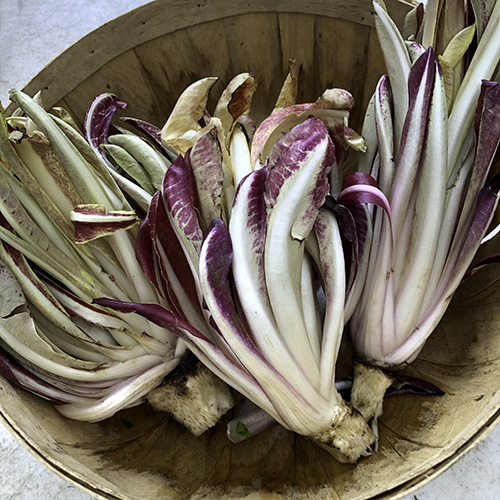
- one medium head of tardivo, a very special chicory, a beautiful form of radicchio that originated in northern Italy, that I found in the stall of Willow Wisp Farm in the Union Square Greenmarket that same afternoon, prepared by washing it under cold running water, the moisture shaken off, cut into 4 segments lengthwise, and a V-cut made most of the way through the root ends of each, which allowed that dense part to cook more evenly with the remainder, the quarters arranged inside a large Pampered Chef unglazed ceramic oven pan cut side up, covered with a few thyme sprigs from Keith’s Farm, seasoned generously with salt and pepper and drizzled with a tablespoon of olive oil, baked inside a 400º oven for about 12 minutes, then turned over and cooked for some 8 minutes more, turned once more so a cut side is once again facing up, returned to the oven once again, but, this time for only a couple minutes or so, or until the stem ends were tender when pierced with a thin blunt metal pin (my all-purpose kitchen tester), removed from the oven [note: the tardivo can be served either hot or warm]
- the plate was garnished with a row of micro nasturtium from Two Guys from Woodbridge
- the wine was an Italian (Lombardy) white, Lugana, Ca’ Lojera 2018, from Astor Wines
- the music was an album of very early Mozart symphonies, Gottfried von der Goltz conducting the Freiburger Barockorchestra
[I had forgotten to photograph the mushrooms last Wednesday, so the image I used here is one I took last May, but of the same variety, and from the same farm, cropped differently]
